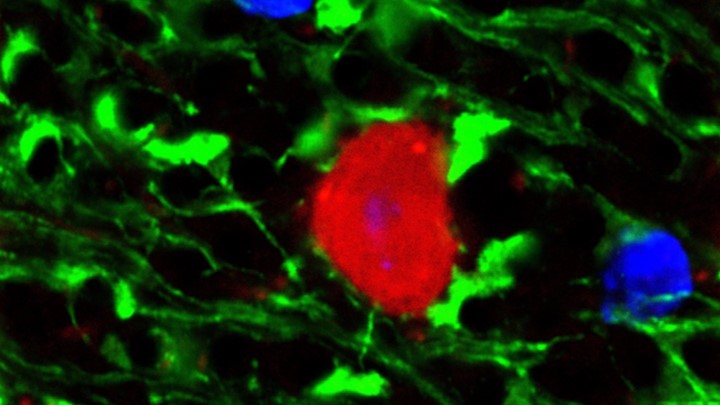filopedia
Unlocking the Brain’s Memory Retrieval System
Posted on by Dr. Francis Collins

Credit:Sahay Lab, Massachusetts General Hospital, Boston
Play the first few bars of any widely known piece of music, be it The Star-Spangled Banner, Beethoven’s Fifth, or The Rolling Stones’ (I Can’t Get No) Satisfaction, and you’ll find that many folks can’t resist filling in the rest of the melody. That’s because the human brain thrives on completing familiar patterns. But, as we grow older, our pattern completion skills often become more error prone.
This image shows some of the neural wiring that controls pattern completion in the mammalian brain. Specifically, you’re looking at a cross-section of a mouse hippocampus that’s packed with dentate granule neurons and their signal-transmitting arms, called axons, (light green). Note how the axons’ short, finger-like projections, called filopodia (bright green), are interacting with a neuron (red) to form a “memory trace” network. Functioning much like an online search engine, memory traces use bits of incoming information, like the first few notes of a song, to locate and pull up more detailed information, like the complete song, from the brain’s repository of memories in the cerebral cortex.
